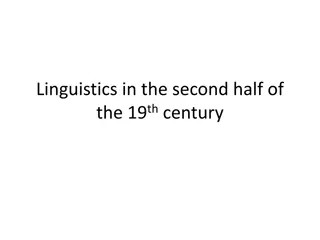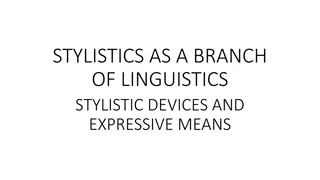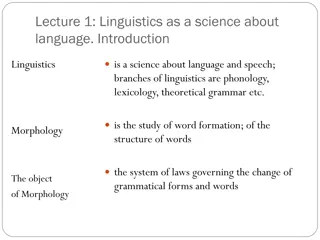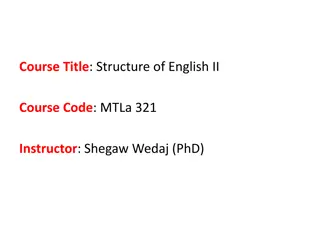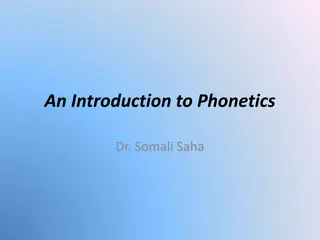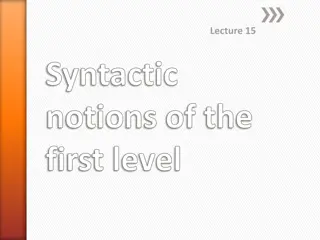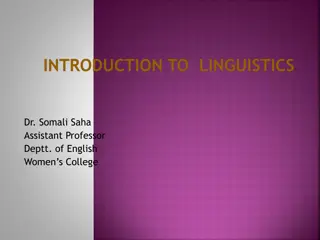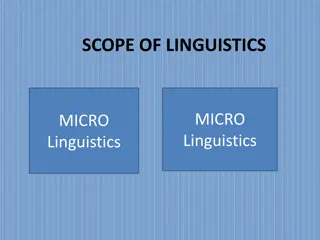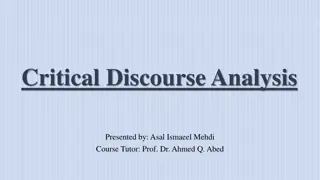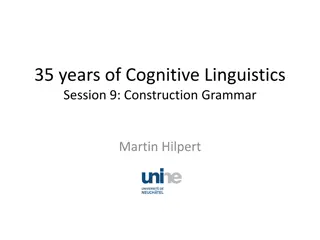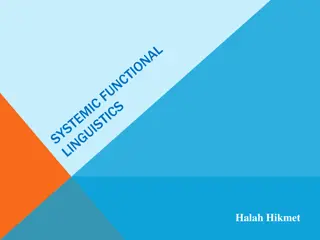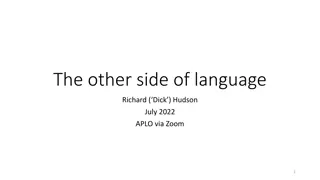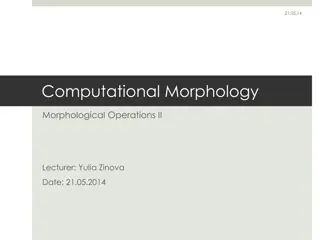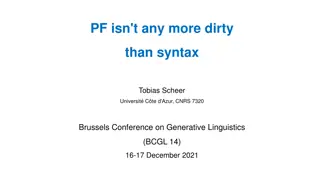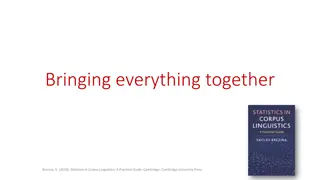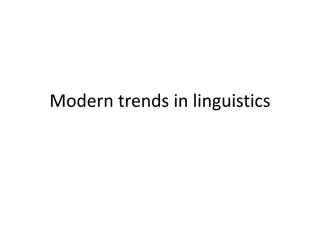
Introduction to Linguistics: Tests on Presuppositions and Statements
Explore tests on presuppositions and statements in linguistics. Analyze sentences to identify entailments, presuppositions, and statement correctness. Gain insights into sense relations like hypernyms, hyponyms, meronyms, and holonyms.
Download Presentation

Please find below an Image/Link to download the presentation.
The content on the website is provided AS IS for your information and personal use only. It may not be sold, licensed, or shared on other websites without obtaining consent from the author. If you encounter any issues during the download, it is possible that the publisher has removed the file from their server.
You are allowed to download the files provided on this website for personal or commercial use, subject to the condition that they are used lawfully. All files are the property of their respective owners.
The content on the website is provided AS IS for your information and personal use only. It may not be sold, licensed, or shared on other websites without obtaining consent from the author.
E N D
Presentation Transcript
SESSION 10 INTRODUCTION TO LINGUISTICS SHUK HAN (SARA) HO 19/01/2021
TEST 9 My landlord has finally sent someone to at least repair the doorbell. Which two of the following sentences are NOT entailed NOT entailed by the sentence in 1)? a. It was my landlord who has sent someone to repair the doorbell. b. It took my landlord many days to send someone to repair the doorbell. c. My dishwasher needs repairing as well. d. The doorbell is what is to be repaired by the person my landlord has sent.
TEST 9 Everyone in the royal family loved our king's dog, who disappeared under mysterious circumstances. Which two of the following sentences are NOT presuppositions of 2)? a. The king had a dog. b. There was at least one person in the royal family except for the king. c. Our king's dog was loved by everyone in the royal family. d. The king's dog has vanished.
TEST 9 Which two of the following statements are incorrect? a. The first constituent in a clause always carries special focus. b. The first constituent in a sentence tends to be reserved for information that is new in the active discourse. c. Cleft constructions are typically used to move a particular constituent into focus. d. A passive can be used to mark the semantic patient of an event as topic.
SENSE RELATION B. KORTMANN P. 204
Hypernym <-> Hyponym : Flower <-> Rose SENSE RELATION I Meronym <-> Holonym: Face <-> Mouth B. KORTMANN P. 203
SENSE RELATION II NON-HIERARCHICAL Label Label Synonym Synonym Complementary antonym Complementary antonym Gradable antonym Gradable antonym Relational opposite Relational opposite Directional opposite Directional opposite Example Example Buy, Purchase Male <-> Female Hot <-> Cold Pupil <-> Teacher Push <-> Pull
SENSE RELATION III LEXICAL AMBIQUITY Label Label Polysemy Polysemy Homonym I Homonym I - - Homophone Homonym II Homonym II Homograph I Example Example Head Top part of the body / Person in charge See <-> Sea Lie place oneself in a horizontal position <-> Lie Speak untruthfully Bass Instrument <-> Bass fish Homophone Homograph I Homonym II Homonym II Homograph II (Heteronym) Homograph II (Heteronym)
HOMEWORK 1. Shortly explain and provide an example for the following terms: i. Polysemy ii. Homophone iii. Homograph iv. Heteronym
HOMEWORK 2. What are the lexical relations between the words in the following pairs? v. shallow deep gradable antonyms synonyms vi. choose select vii. semantic linguistics hyponym - hypernym viii. tree leaf holonym - meronym ix. after before complementary antonyms
HOMEWORK 3. What is funny about the headline: Where s the party? How to get young people to vote for their politicians. Party is a polysemous
HOMEWORK 4. Give an example of a prototypical member and a peripheral (opposite to prototypical) member of the concept animal. Prototypical: dog, bird Peripheral: human, plankton BIEWANGER & BECKER P.140

